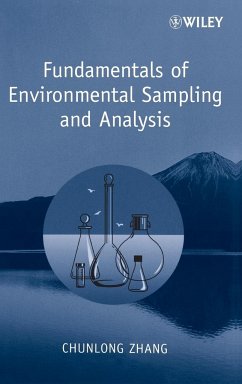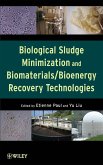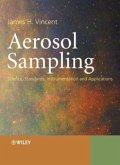This book provides a comprehensive overview on the fundamentals of environmental sampling and analysis for students in environmental science and engineering as well as environmental professionals in sampling and analytical work. It uses a "know why" rather than a "know how" approach. It details fundamentals of sampling, selection of standard methods, chemical and instrumental principles, and method applications for particular contaminants. The book gives an integrated introduction to the accurate sampling and analysis that is essential to quality environmental data.
An integrated approach to understanding the principles of sampling, chemical analysis, and instrumentation
This unique reference focuses on the overall framework and why various methodologies are used in environmental sampling and analysis. An understanding of the underlying theories and principles empowers environmental professionals to select and adapt the proper sampling and analytical protocols for specific contaminants as well as for specific project applications. Covering both field sampling and laboratory analysis, Fundamentals of Environmental Sampling and Analysis includes:
_
A review of the basic analytical and organic chemistry, statistics, hydrogeology, and environmental regulations relevant to sampling and analysis
_
An overview of the fundamentals of environmental sampling design, sampling techniques, and quality assurance/quality control (QA/QC) essential to acquire quality environmental data
_
A detailed discussion of: the theories of absorption spectroscopy for qualitative and quantitative environmental analysis; metal analysis using various atomic absorption and emission spectrometric methods; and the instrumental principles of common chromatographic and electrochemical methods
_
An introduction to advanced analytical techniques, including various hyphenated mass spectrometries and nuclear magnetic resonance spectroscopy
With real-life case studies that illustrate the principles plus problems and questions at the end of each chapter to solidify understanding, this is a practical, hands-on reference for practitioners and a great textbook for upper-level undergraduates and graduate students in environmental science and engineering.
An integrated approach to understanding the principles of sampling, chemical analysis, and instrumentation
This unique reference focuses on the overall framework and why various methodologies are used in environmental sampling and analysis. An understanding of the underlying theories and principles empowers environmental professionals to select and adapt the proper sampling and analytical protocols for specific contaminants as well as for specific project applications. Covering both field sampling and laboratory analysis, Fundamentals of Environmental Sampling and Analysis includes:
_
A review of the basic analytical and organic chemistry, statistics, hydrogeology, and environmental regulations relevant to sampling and analysis
_
An overview of the fundamentals of environmental sampling design, sampling techniques, and quality assurance/quality control (QA/QC) essential to acquire quality environmental data
_
A detailed discussion of: the theories of absorption spectroscopy for qualitative and quantitative environmental analysis; metal analysis using various atomic absorption and emission spectrometric methods; and the instrumental principles of common chromatographic and electrochemical methods
_
An introduction to advanced analytical techniques, including various hyphenated mass spectrometries and nuclear magnetic resonance spectroscopy
With real-life case studies that illustrate the principles plus problems and questions at the end of each chapter to solidify understanding, this is a practical, hands-on reference for practitioners and a great textbook for upper-level undergraduates and graduate students in environmental science and engineering.
"... real-life case studies also helps put the material in context and some chapters have a 'practical tips' section...(Chemistry World, September 2007)
"...an excellent book that I am sure will be adopted by many faculty members." (Journal of Hazardous Materials, August 17, 2007)
"...an excellent book that I am sure will be adopted by many faculty members." (Journal of Hazardous Materials, August 17, 2007)
"This book gives an excellent contribution to the understanding of the fundamentals of environmental sampling and analysis including. The book is a unique reference for a large audience from students to environmental scientists at different stage of their work. The book is a valuable guide and reference tool and should appeal to a wide ranging audience including students, academics and environmental professionals" (Environment International, 2008)
"As a particular feature, it includes questions and exercise problems in each chapter to help to understand these concepts." (International Journal of Environmental and Analytical Chemistry, December 2007)
"The author writes in the first person plural which gives the book a rather chatty style that works reasonably well. References to real-life case studies also helps put the material in context and some chapters have a 'practical tips' section which is a useful feature" (Chemistry World, September 2007)
"An excellent book that I am sure will be adopted by many faculty members." (Journal of Hazardous Materials, August 17, 2007)
"As a particular feature, it includes questions and exercise problems in each chapter to help to understand these concepts." (International Journal of Environmental and Analytical Chemistry, December 2007)
"The author writes in the first person plural which gives the book a rather chatty style that works reasonably well. References to real-life case studies also helps put the material in context and some chapters have a 'practical tips' section which is a useful feature" (Chemistry World, September 2007)
"An excellent book that I am sure will be adopted by many faculty members." (Journal of Hazardous Materials, August 17, 2007)








